Mekanika-3 (glb dan glbb)
Konsep
yang kita pelajari kali ini adalah tentang gerak lurus. Hampir semua
benda yang kita jumpai mobil, kereta, motor dll, adalah contoh fenomena
gerak lurus. Benda yang bergerak lurus ada yang memiliki kecepatan
tetap (konstan) ada juga yang kecepatannya dipercepat dengan percepatan
tetap (konstan).
Gerak benda dengan kecepatan tetap disebut GLB dan gerak benda dengan kecepatan yang berubah dengan teratur disebut GLBB.
- GLB (gerak lurus beraturan)
Ciri gerak ini v = tetap, artinya perubahan kecepatan = 0, sehingga a
(percepatan) = 0. Artinya dalam selang waktu yang sama jarak yang
ditempuh benda juga sama, persamaan yang digunakan dalam gerak ini pun
sangat sederhana
S = V x t
S = jarak (m)
V = kecepatan benda (m/s)
t = waktu (s)
Berikut ciri grafik gerak GLB
- GLBB (gerak lurus berubah beraturan)
Ciri dari gerak lurus ini a = tetap, sehingga terjadi perubahan
kecepatan yang teratur sesuai dengan percepatan benda. Percepatan yang
dialami benda bisa bertanda positif (dipercepat) ataupun negatif
(diperlambat). Persamaan yang digunakan cukup mudah diingat
V = Vo + at
S = Vo t + 1/2 at2
V2 = Vo2 + 2as
yang perlu diingat adalah " tanda percepatannya apakah dipercepat (+) atau diperlambat (-) "
Berikut ciri grafik dari gerak GLBB

Contoh Soal :
1. Dari gambar dibawah tentukan :

a. jarak yang ditempuh benda dari t = 20 s sampai t = 60 s
b. percepatan benda dari t = 0 s sampai t = 20 s
c. perlambatan benda dari t = 60 s sampai t = 80 s
d. jarak total benda dari mulai bergerak sampai berhenti
Penyelesaian :
a. Trick : " jarak (S) = luas daerah persegi panjang "
S = 40 x 15
= 600 m
b. Trick : " a = kemiringan grafik (nilai tan α) "
a = (15 - 0) / (20 - 0)
= 0,75 m/s2 , (+) ---> dipercepat
c. sama dengan trick sebelumnya
a = (0 - 15) / (80 - 60)
= - 15 / 20
= - 0,75 m/s2 , (-) ---> diperlambat
d. Trick : " S = luas daerah Trapesium "
S = 1/2 x (40 + 80) 15
= 900 m
2. Sebuah
sedan berada di depan sebuah bus dengan jarak 50 m, keduanya sedang
melaju di jalan tol dengan kecepatan yang sama. Suatu saat sedan
diperlambat dengan perlambatan 3 m/s2 sedangkan bus yang berada di belakangnya diperlambat dengan perlambatan 2 m/s2 karena di depan kedua kendaraan telah terjadi kecelakaan. Berapakah kecepatan bus sesaat sebelum menabrak sedan ?
Penyelesaian :
Trick : “ jarak yang ditempuh bus (Sb) = 50 m + jarak yang ditempuh sedan sampai berhenti (Ss) “
Sb = 50 + Ss
Vo + ½ ab t2 = 50 + Vo + ½ as t2
- ½ 2 t2 = 50 - ½ 3t2
½ t2 = 50
t = 10 s
sedan
0 = Vo – 3 . 10
Vo = 30 m/s (Vo untuk sedan dan bus adalah sama)
Bus
V = 30 – 2 . 10
V = 10 m/s (kecepatan bus sesaat sebelum menabrak sedan)picture;
Downlad soal glb dan glbb


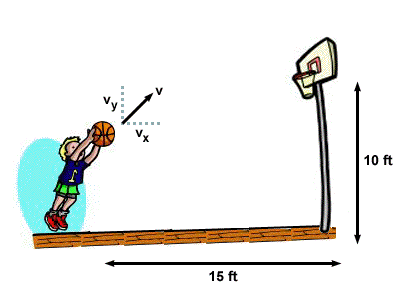
 (0, 0, - g)t 2 + v 0 t + (0, 0, 6)
(0, 0, - g)t 2 + v 0 t + (0, 0, 6) gt 2 + v z t + 6
gt 2 + v z t + 6 and t 2 =
and t 2 =  .
. =
= 
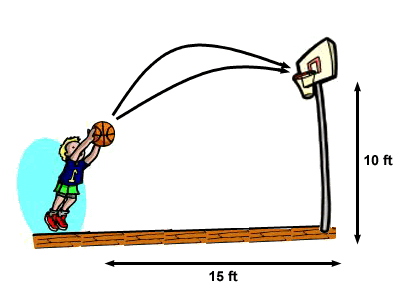



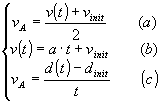
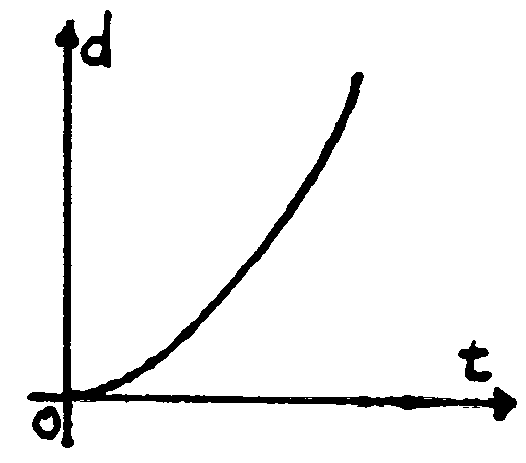

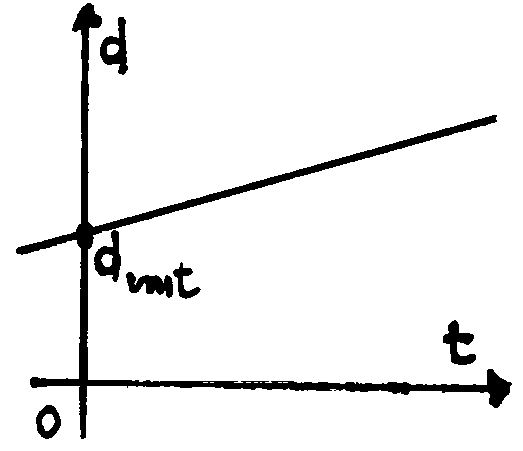


 according to the definition
according to the definition v (t2) = v (t1) + a (t2 - t1)
v (t2) = v (t1) + a (t2 - t1)




